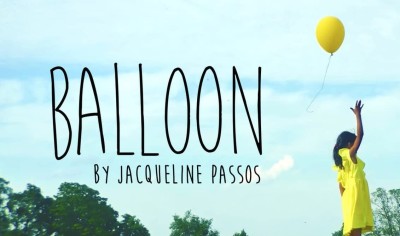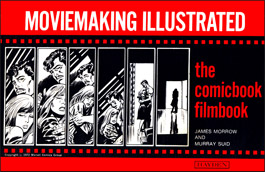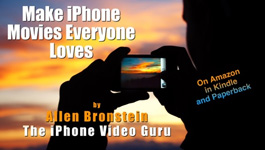William Long is a London-based filmmaker. He’s a full-time editor who’s worked on BBC’s Big Cat Live, fashion films for Dior, and most recently a short horror film for Film4’s Fright Fest, directed by Christian James. William also writes and directs his own projects. Recently he journeyed to North Korea, seeking to bring back an honest view of daily life in that often-maligned country. His thoughts on the project are relevant to anyone wanting to make an unbiased travelogue.
MMM: Could you tell us something about how you got into filmmaking?
William: I became interested in filmmaking whilst I was at school, and went on to study film and animation at the University of the Arts, London.
MMM: Did any filmmakers influence you?
William: Not so much influence me, but I’ve always been a fan of Steven Spielberg, David Fincher and Wes Anderson. I’m an avid reader and believe that reading fiction can make you a better filmmaker as if forces you to create your own images in your mind. And reading nonfiction can also be helpful.
MMM: Any titles that you can share?
William: There are three books that I recommend to anyone who is interested in filmmaking: The Elements of Style (Strunk and White) is a book about writing English and it’s golden rule, ‘omit needless words’ has helped me to understand how important it is to only show what is important. On Writing (Stephen King), part-memoir and part writing guide is the most inspiring book I’ve ever read about living a creative lifestyle. It isn’t just about writing, it’s a personal account on how story-telling has impacted a single man’s life. The third book, Writing Screenplays That Sell (Michael Hauge), taught me how important structure is in story telling. I use that every day in my writing and film-editing. Those three books are all about writing and the last two are geared towards fiction, but I believe that even documentaries incorporate aspects of fiction, whether it’s how to structure your story or what emotions you’re trying to elicit.
MMM: Speaking of documentaries, what led you to doing a movie about North Korea?
William: I know someone who works in North Korea and was invited to visit them, so I couldn’t pass up on the invitation and I knew that I had to shoot some footage whilst I was there. I wanted to show what the country was like, the type of people who live there, but also I wanted to make it as un-biased as possible. I didn’t want to make a statement about the country, I wanted to create an honest presentation.
MMM: Was there any difficulty in getting permission to shoot in North Korea?
William: North Korea is more open to tourists than people expect. We were shown around by two guides who were incredibly proud of their country and wanted us to take as many photos as possible. There were a few rules; we weren’t allowed to film anyone in uniform, be that soldier, police or traffic warden, and we had to ask permission from anyone we wanted to film or photograph. Being proud of their country, they also asked us to take photos and film all of the beautiful things that we saw, so that we could show others how beautiful their country is.
MMM: What response have you had from viewers?
William: A lot of people who have seen the film were surprised that North Korea allow tourists to visit the country, but they also allow people to film inside their country. It really is much more open than people are aware.
MMM: What made you decide to use the smartphone to shoot “Life in North Korea” rather than use a traditional camera?
William: Shooting on my iPhone 5s was a matter of necessity. I wasn’t allowed to take in professional film equipment, and there was a limit as to how long your lenses could be. I wanted to use a camera that was small, light and shot in HD. That just so happened to be my phone. It’s great because it is a fast shooter, little set-up and can be taken anywhere. I’ve had a lot of great compliments from people who were shocked to find out that the film was shot on a phone, but despite that I still don’t think the quality is 100%. To me, it looks like it was shot on a phone. It was also incredibly shaky. I managed to stabilise a lot of it in Premiere Pro, but there were some shots that just couldn’t be stabilised at all.
MMM: Did you use any gear?
William: I didn’t use any other equipment, but I did shoot using the Filmic Pro app, which allowed manual control over focus, white-balance and exposure. That was essential.
MMM: What editing system did you use?
William: I edited the film using Premiere Pro CC.
MMM: Did you encounter any difficulties during the shoot?
William: One problem I had was that the storage filled-up quickly. Ideally I would have liked to have had an external storage case.
MMM: What about in the post?
William: I did have a few frustrating problems during the edit. I had taken some shots in slow-motion, which Filmic Pro allows and does really well, but when I edited the film using Premiere Pro CC it didn’t handle the different frame rates well. Most of it was shot at 25fps but the slow-motion was shot at 60fps and 120fps. Premiere handled it well at first, but after a while it would export some frames and some clips as nothing more than a green screen. I couldn’t find a proper solution to it anywhere online despite others facing the same problems. So I used the render-and-replace feature in Premiere, which unified the format and frame rates of each shot, and that fixed the problem for me. Filmic Pro also can’t shoot slow-motion in 1080p so whilst everything else was shot at 1080p the slow-motion shots were shot at 720p. I edited and exported the film at 720p.
MMM: The music works very well. How did you find it?
William: Jamie Long, the film’s composer, is also my brother and accompanied me to North Korea. He has composed music for some of my other films as well. Because the iPhone microphone is essentially unusable I couldn’t use any natural sound in the film so the music really needed to fill that space. The challenge was to have to music relate to what was seen on screen. Other films on North Korea feature music that is either tense, to suggest that you’re not in a safe country, or quirky. Jamie wanted to create something that was inspiring and beautiful, because that was the North Korea that we experienced. Our creative process was quite fluid; I sent the first cut of the film, to work on some musical ideas, and then I sent him another cut near completion. Once the music was composed there were a few scenes that had to be rearranged to fit the music a little better and a few shots were cut to hit key beats. (Jamie Long’s website is www.drjamie.co.uk)
MMM: Do you have any advice for filmmakers who would like to make a movie like yours–one that captures the reality of a place?
William: Be bold and don’t be afraid to shoot people up close. It is by looking at people and their reactions that we can really understand who they are and what a country is like. You’re not allowed to feel uncomfortable or shy. If you think someone or something looks interesting, get up close and shoot.
MMM: Do you want to make a prediction about the future of mobile moviemaking?
William: I think mobile-shot movies are really going to blow up. As the quality of mobile cameras improves we’re going to see more and more, and better and better, films being shot on phones. This is the medium of future film-makers. Kids now have the capability to make great looking films cheaply and easily; they’re going to be inspired and learn how to make films from a young age. It’s a really exciting prospect.
MMM: Can you tell us about your next project?
William: I have just finished a music video for a Canadian band called SHYRE, who are really good. That will be coming out shortly, so keep your eyes out for that!
MMM: How can people follow your work?
William: If anyone is interested in seeing more of my work, they should visit my website: www.longfilms.co.uk and my vimeo page: www.vimeo.com/williamlong. I also do some work for a great animation company: www.tinmouseanimation.com/



 Previous post
Previous post
 Next post
Next post





